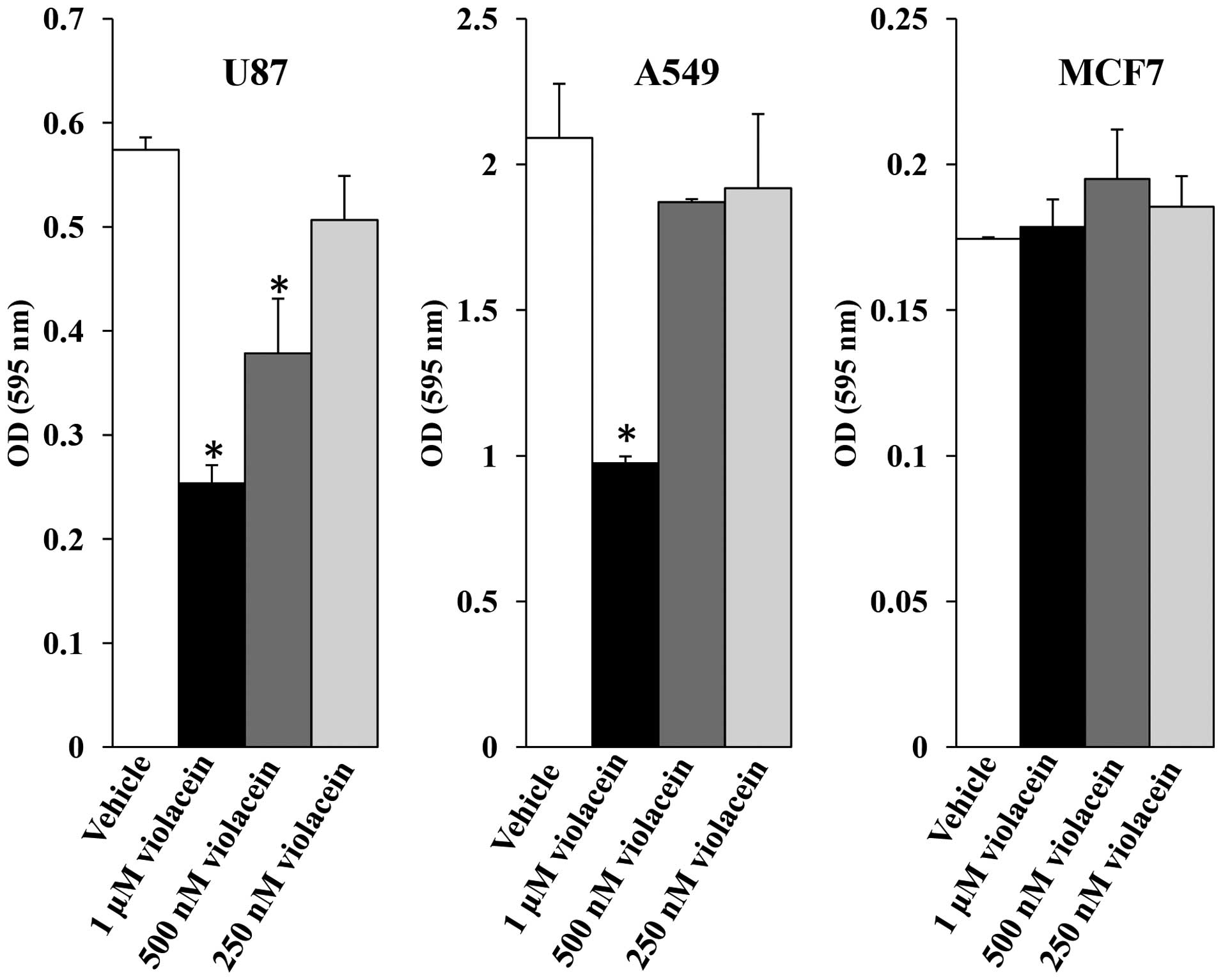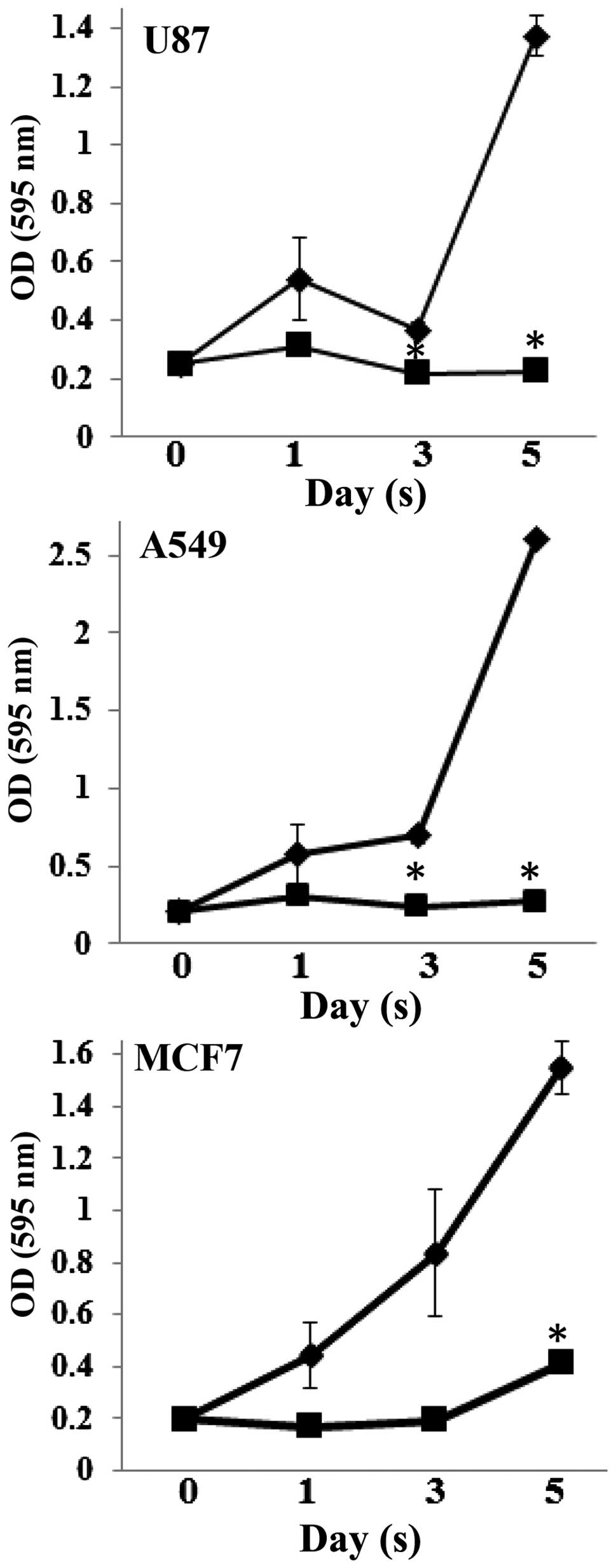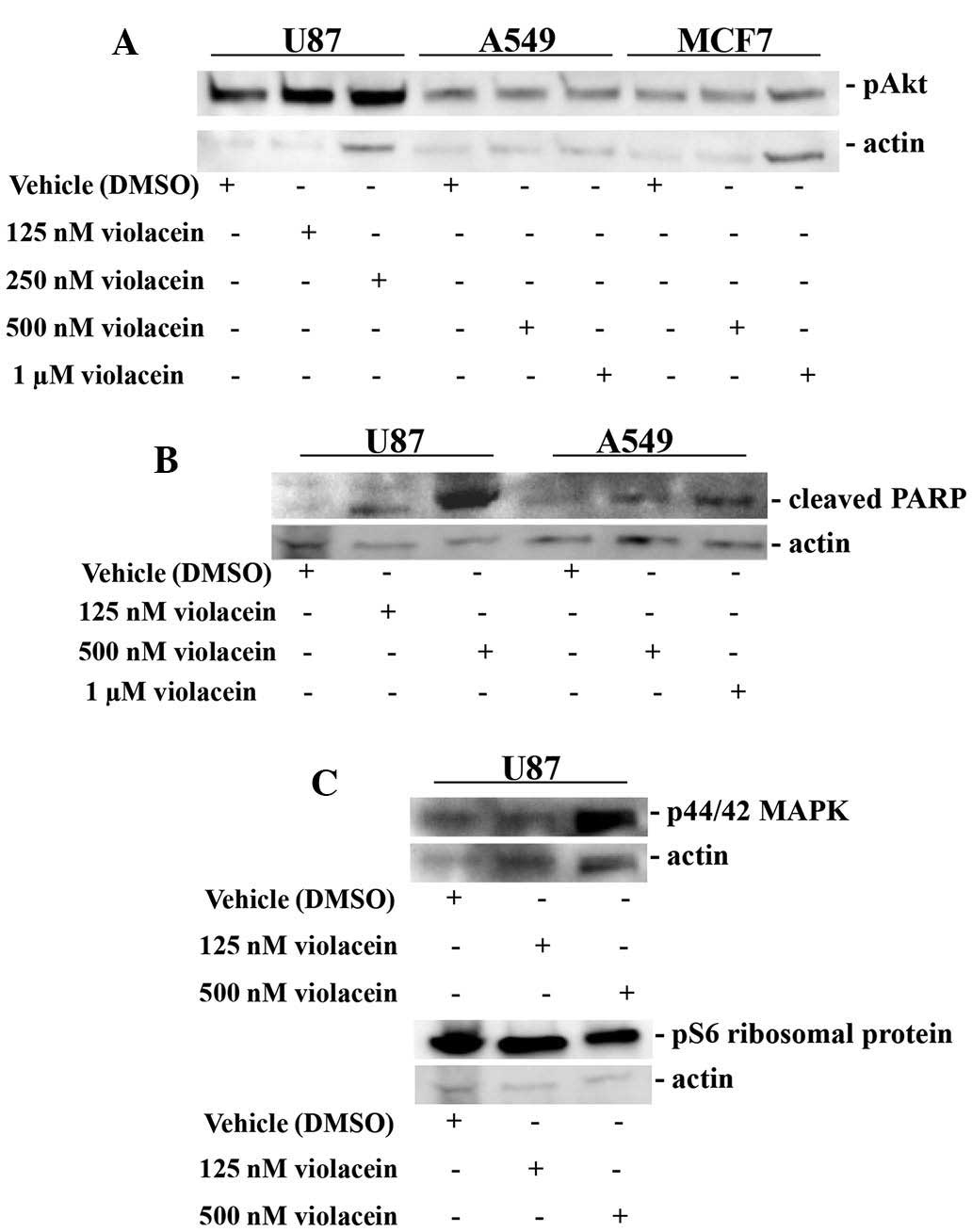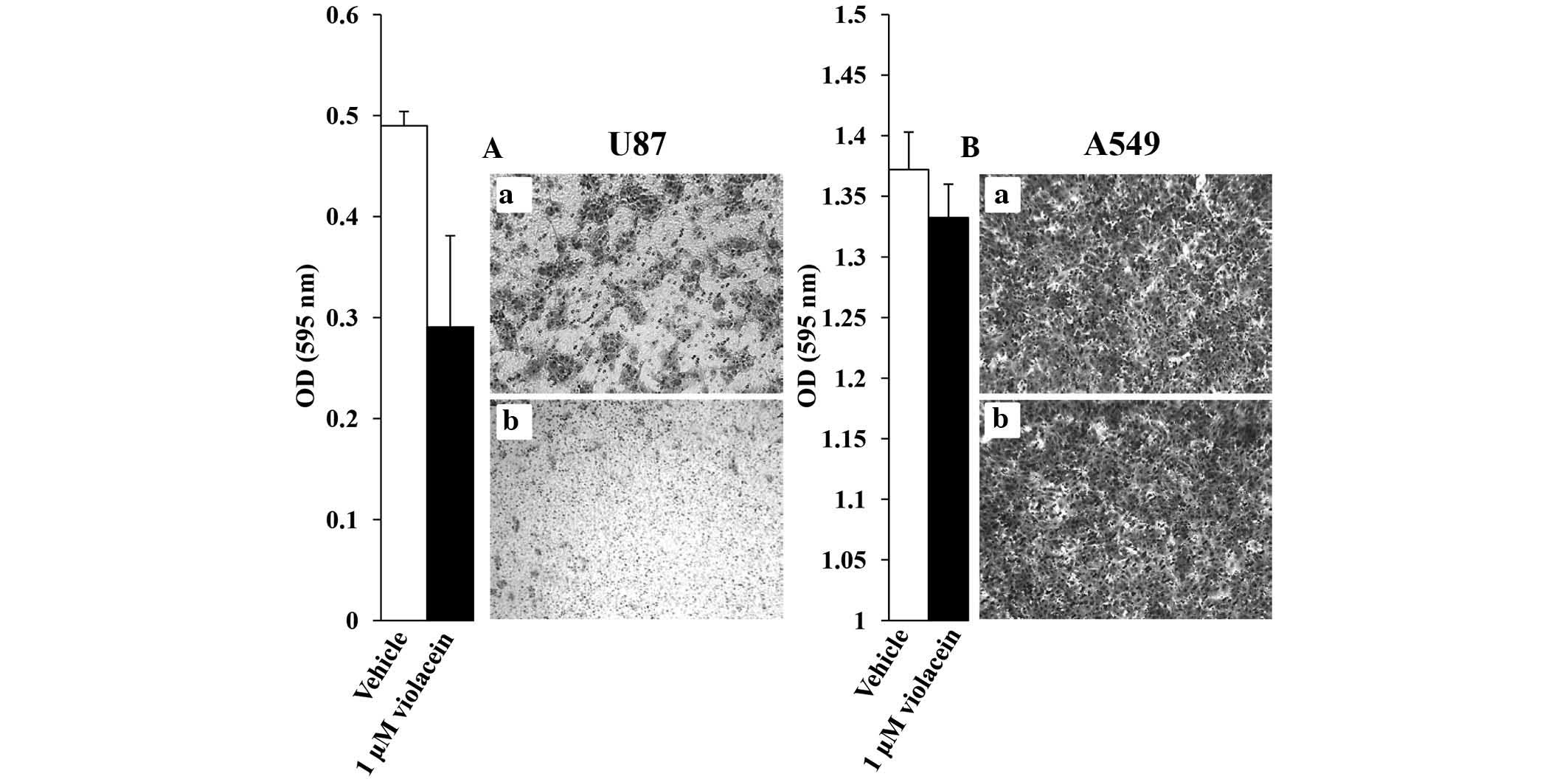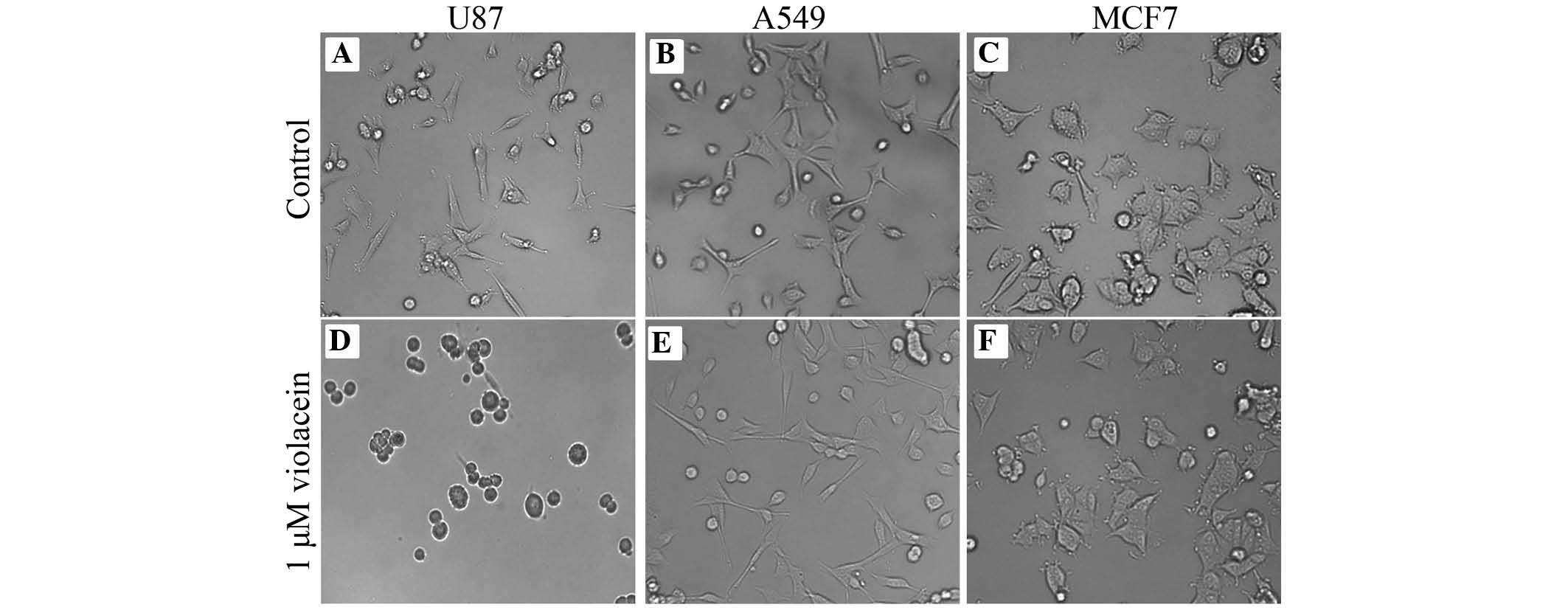|
1
|
Forbes NS: Engineering the perfect
(bacterial) cancer therapy. Nat Rev Cancer. 10:785–794. 2010.
View Article : Google Scholar : PubMed/NCBI
|
|
2
|
Patyar S, Joshi R, Byrav DS, Prakash A,
Medhi B and Das BK: Bacteria in cancer therapy: A novel
experimental strategy. J Biomed Sci. 17:212010. View Article : Google Scholar : PubMed/NCBI
|
|
3
|
Bernardes N, Seruca R, Chakrabarty AM and
Fialho AM: Microbial-based therapy of cancer: Current progress and
future prospects. Bioeng Bugs. 1:178–190. 2010. View Article : Google Scholar
|
|
4
|
Andrighetti-Fröhner CR, Antonio RV,
Creczynski-Pasa TB, Barardi CR and Simões CM: Cytotoxicity and
potential antiviral evaluation of violacein produced by
Chromobacterium violaceum. Mem Inst Oswaldo Cruz. 98:843–848. 2003.
View Article : Google Scholar : PubMed/NCBI
|
|
5
|
Vaishnav P and Demain AL: Unexpected
applications of secondary metabolites. Biotechnol Adv. 29:223–229.
2011. View Article : Google Scholar
|
|
6
|
Ito T, Kawata S, Tamura S, Igura T, Nagase
T, Miyagawa JI, Yamazaki E, Ishiguro H and Matasuzawa Y:
Suppression of human pancreatic cancer growth in BALB/c nude mice
by manumycin, a farnesyl:protein transferase inhibitor. Jpn J
Cancer Res. 87:113–116. 1996. View Article : Google Scholar : PubMed/NCBI
|
|
7
|
Kainuma O, Asano T, Hasegawa M, Kenmochi
T, Nakagohri T, Tokoro Y and Isono K: Inhibition of growth and
invasive activity of human pancreatic cancer cells by a
farnesyltransferase inhibitor, manumycin. Pancreas. 15:379–383.
1997. View Article : Google Scholar : PubMed/NCBI
|
|
8
|
Yeung SC, Xu G, Pan J, Christgen M and
Bamiagis A: Manumycin enhances the cytotoxic effect of paclitaxel
on anaplastic thyroid carcinoma cells. Cancer Res. 60:650–656.
2000.PubMed/NCBI
|
|
9
|
She M, Pan I, Sun L and Yeung SC:
Enhancement of manumycin A-induced apoptosis by methoxyamine in
myeloid leukemia cells. Leukemia. 19:595–602. 2005.PubMed/NCBI
|
|
10
|
Frassanito MA, Cusmai A, Piccoli C and
Dammacco F: Manumycin inhibits farnesyltransferase and induces
apoptosis of drug-resistant interleukin 6-producing myeloma cells.
Br J Haematol. 118:157–165. 2002. View Article : Google Scholar : PubMed/NCBI
|
|
11
|
Zhou JM, Zhu XF, Pan QC, Liao DF, Li ZM
and Liu ZC: Manumycin inhibits cell proliferation and the Ras
signal transduction pathway in human hepatocellular carcinoma
cells. Int J Mol Med. 11:767–771. 2003.PubMed/NCBI
|
|
12
|
Zhou JM, Zhu XF, Pan QC, Liao DF, Li ZM
and Liu ZC: Manumycin induces apoptosis in human hepatocellular
carcinoma HepG2 cells. Int J Mol Med. 12:955–959. 2003.PubMed/NCBI
|
|
13
|
Pan J, Xu G and Yeung SC: Cytochrome c
release is upstream to activation of caspase-9, caspase-8, and
caspase-3 in the enhanced apoptosis of anaplastic thyroid cancer
cells induced by manumycin and paclitaxel. J Clin Endocrinol Metab.
86:4731–4740. 2001. View Article : Google Scholar : PubMed/NCBI
|
|
14
|
Ishii T, Hayashi K, Hida T, Yamamoto Y and
Nozaki Y: TAN-1813, a novel Ras-farnesyltransferase inhibitor
produced by Phoma sp. taxonomy, fermentation, isolation and
biological activities in vitro and in vivo. J Antibiot (Tokyo).
53:765–778. 2000. View Article : Google Scholar
|
|
15
|
Nguyen M, Marcellus RC, Roulston A, Watson
M, Serfass L, Murthy Madiraju SR, Goulet D, Viallet J, Bélec L,
Billot X, et al: Small molecule obatoclax (GX15-070) antagonizes
MCL-1 and overcomes MCL-1-mediated resistance to apoptosis. Proc
Natl Acad Sci USA. 104:19512–19517. 2007. View Article : Google Scholar : PubMed/NCBI
|
|
16
|
Pérez-Galán P, Roué G, Villamor N, Campo E
and Colomer D: The BH3-mimetic GX15-070 synergizes with bortezomib
in mantle cell lymphoma by enhancing Noxa-mediated activation of
Bak. Blood. 109:4441–4449. 2007. View Article : Google Scholar : PubMed/NCBI
|
|
17
|
Trudel S, Li ZH, Rauw J, Tiedemann RE, Wen
XY and Stewart AK: Preclinical studies of the pan-Bcl inhibitor
obatoclax (GX015-070) in multiple myeloma. Blood. 109:5430–5438.
2007. View Article : Google Scholar : PubMed/NCBI
|
|
18
|
Fumoleau P, Coudert B, Isambert N and
Ferrant E: Novel tubulin-targeting agents: Anticancer activity and
pharmacologic profile of epothilones and related analogues. Ann
Oncol. 18(Suppl 5): v9–v15. 2007. View Article : Google Scholar : PubMed/NCBI
|
|
19
|
Nettles JH, Li H, Cornett B, Krahn JM,
Snyder JP and Downing KH: The binding mode of epothilone A on
alpha, beta-tubulin by electron crystallography. Science.
305:866–869. 2004. View Article : Google Scholar : PubMed/NCBI
|
|
20
|
Cheng KL, Bradley T and Budman DR: Novel
microtubule-targeting agents - the epothilones. Biologics.
2:789–811. 2008.
|
|
21
|
Bollag DM, McQueney PA, Zhu J, Hensens O,
Koupal L, Liesch J, Goetz M, Lazarides E and Woods CM: Epothilones,
a new class of microtubule-stabilizing agents with a taxol-like
mechanism of action. Cancer Res. 55:2325–2333. 1995.PubMed/NCBI
|
|
22
|
Lee FY, Borzilleri R, Fairchild CR, Kim
SH, Long BH, Reventos-Suarez C, Vite GD, Rose WC and Kramer RA:
BMS-247550: A novel epothilone analog with a mode of action similar
to paclitaxel but possessing superior antitumor efficacy. Clin
Cancer Res. 7:1429–1437. 2001.PubMed/NCBI
|
|
23
|
de Carvalho DD, Costa FT, Duran N and Haun
M: Cytotoxic activity of violacein in human colon cancer cells.
Toxicol In Vitro. 20:1514–1521. 2006. View Article : Google Scholar : PubMed/NCBI
|
|
24
|
Kodach LL, Bos CL, Durán N, Peppelenbosch
MP, Ferreira CV and Hardwick JC: Violacein synergistically
increases 5-fluoro-uracil cytotoxicity, induces apoptosis and
inhibits Akt-mediated signal transduction in human colorectal
cancer cells. Carcinogenesis. 27:508–516. 2006. View Article : Google Scholar
|
|
25
|
Queiroz KC, Milani R, Ruela-de-Sousa RR,
Fuhler GM, Justo GZ, Zambuzzi WF, Duran N, Diks SH, Spek CA,
Ferreira CV, et al: Violacein induces death of resistant leukaemia
cells via kinome reprogramming, endoplasmic reticulum stress and
Golgi apparatus collapse. PLoS One. 7:e453622012. View Article : Google Scholar : PubMed/NCBI
|
|
26
|
Melo PS, Justo GZ, de Azevedo MB, Durán N
and Haun M: Violacein and its beta-cyclodextrin complexes induce
apoptosis and differentiation in HL60 cells. Toxicology.
186:217–225. 2003. View Article : Google Scholar : PubMed/NCBI
|
|
27
|
Ferreira CV, Bos CL, Versteeg HH, Justo
GZ, Durán N and Peppelenbosch MP: Molecular mechanism of
violacein-mediated human leukemia cell death. Blood. 104:1459–1464.
2004. View Article : Google Scholar : PubMed/NCBI
|
|
28
|
Bromberg N, Dreyfuss JL, Regatieri CV,
Palladino MV, Durán N, Nader HB, Haun M and Justo GZ: Growth
inhibition and pro-apoptotic activity of violacein in Ehrlich
ascites tumor. Chem Biol Interact. 186:43–52. 2010. View Article : Google Scholar : PubMed/NCBI
|
|
29
|
Rettori D and Durán N: Production,
extraction and purification of violacein: an antibiotic pigment
produced by Chromobacterium violaceum. World Journal of
Microbiology and Biotechnology. 4:685–688. 1998. View Article : Google Scholar
|
|
30
|
Stelzer KJ: Epidemiology and prognosis of
brain metastases. Surg Neurol Int. 4(Suppl 4): S192–S202.
2013.PubMed/NCBI
|
|
31
|
Melo PS, De Azevedo MM, Frungillo L,
Anazetti MC, Marcato PD and Duran N: Nanocytotoxicity: Violacein
and violacein-loaded poly (D,L-lactide-co-glycolide) nanoparticles
acting on human leukemic cells. J Biomed Nanotechnol. 5:192–201.
2009. View Article : Google Scholar
|
|
32
|
Melo PS, Maria SS, Vidal BC, Haun M and
Durán N: Violacein cytotoxicity and induction of apoptosis in V79
cells. In Vitro Cell Dev Biol Anim. 36:539–543. 2000. View Article : Google Scholar
|
|
33
|
Saraiva VS, Marshall JC, Cools-Lartigue J
and Burnier MN Jr: Cytotoxic effects of violacein in human uveal
melanoma cell lines. Melanoma Res. 14:421–424. 2004. View Article : Google Scholar : PubMed/NCBI
|
|
34
|
Menezes CB, Silva BP, Sousa IM, Ruiz AL,
Spindola HM, Cabral E, Eberlin MN, Tinti SV, Carvalho JE, Foglio
MA, et al: In vitro and in vivo antitumor activity of crude
extracts obtained from Brazilian Chromobacterium sp isolates. Braz
J Med Biol Res. 46:65–70. 2013.
|
|
35
|
Mojib N, Nasti TH, Andersen DT, Attigada
VR, Hoover RB, Yusuf N and Bej AK: The antiproliferative function
of violacein-like purple violet pigment (PVP) from an Antarctic
Janthinobacterium sp. Ant5-2 in UV-induced 2237 fibrosarcoma. Int J
Dermatol. 50:1223–1233. 2011. View Article : Google Scholar : PubMed/NCBI
|
|
36
|
Platt D, Amara S, Mehta T, Vercuyssee K,
Myles EL, Johnson T and Tiriveedhi V: Violacein inhibits matrix
metalloproteinase mediated CXCR4 expression: Potential anti-tumor
effect in cancer invasion and metastasis. Biochem Biophys Res
Commun. 455:107–112. 2014. View Article : Google Scholar : PubMed/NCBI
|
|
37
|
VanderMolen KM, McCulloch W, Pearce CJ and
Oberlies NH: Romidepsin (Istodax, NSC 630176, FR901228, FK228,
depsipeptide): A natural product recently approved for cutaneous
T-cell lymphoma. J Antibiot (Tokyo). 64:525–531. 2011. View Article : Google Scholar
|



